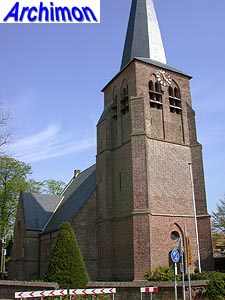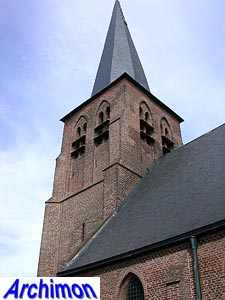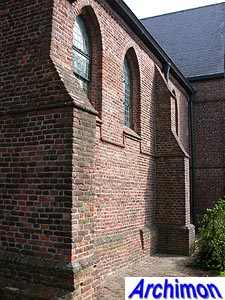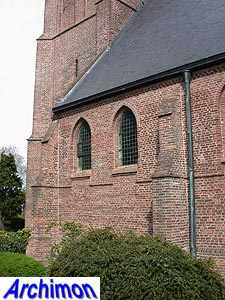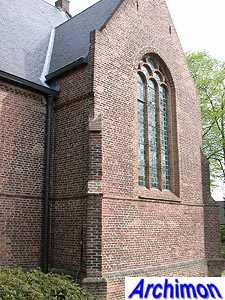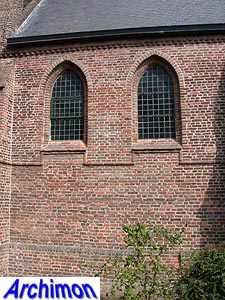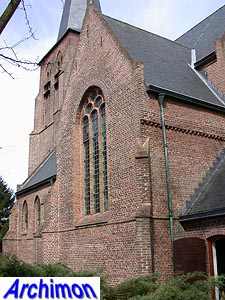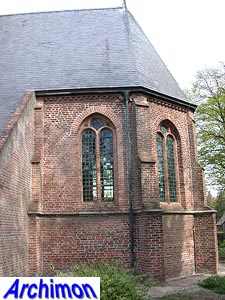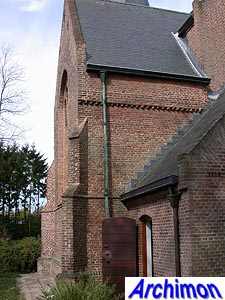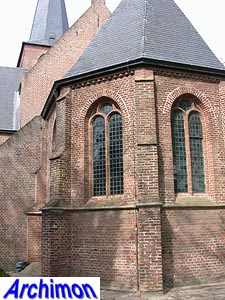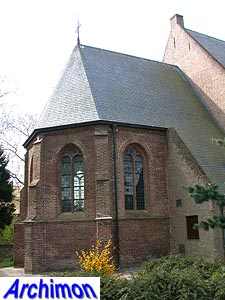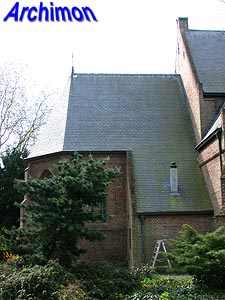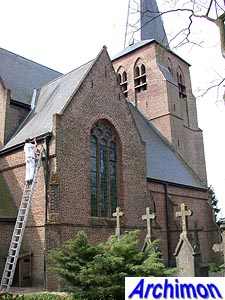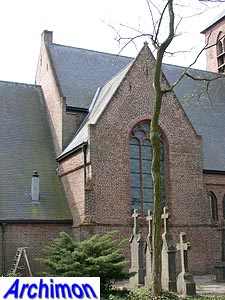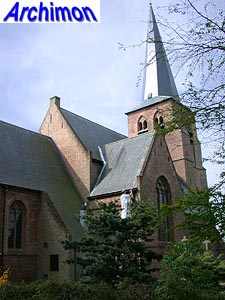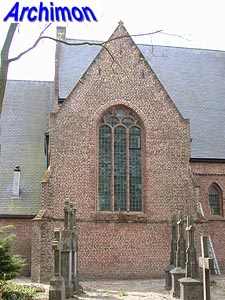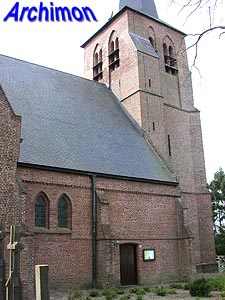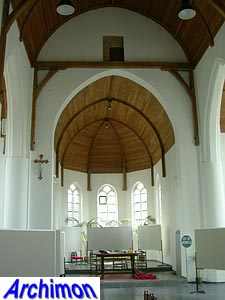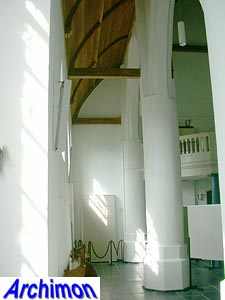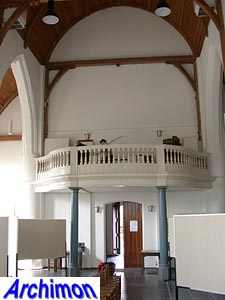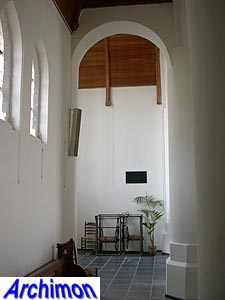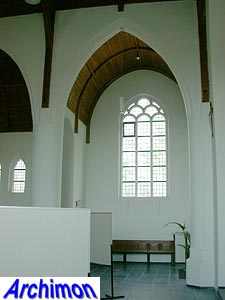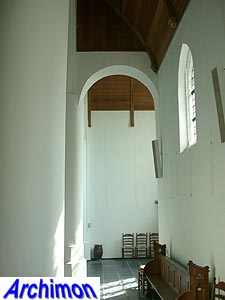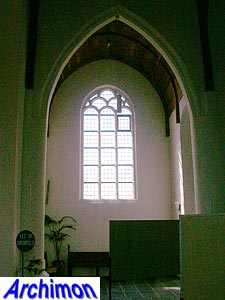
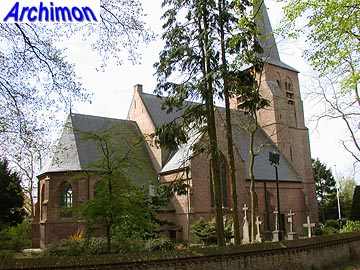
The former St. Willibrord of Middelbeers
is one of the best preserved medieval village churches in the Noord-Brabant province. The church, a three-aisled cruciform
pseudo-basilica, is a typical example of a village church in Campine
Gothic style. Its choir was built in ca. 1400 on a foundation of tuff,
probably of a Romanesque predecessor. Traces indicate that
this choir was either added to a very low nave or was temporarily a
free-standing chapel. The rest of the church must however been built in the 15th
century. Probably the tower was built in the same period as the choir.
While the
transept is of equal height as the choir, the nave has a taller roof. The entire
church is covered by wooden vaults. At the front of the church is a tower of a type typical for the 'poorer' variant of Campine
Gothic: a short and robust, massive looking tower without ornaments, supported
by heavy, diagonally positioned buttresses. At the north side is a square
stair-turret.
In 1648, the year of protestant victory, the catholic faith was outlawed and
all churches became protestant property. However, there were hardly any
protestants in the village. By the end of the 18th century none remained in
Middelbeers, and the church was returned to the catholics without further
problems in 1796. The church was repaired and in the next century it underwent several changes in
neo-Classical and neo-Gothic styles; the originally square pillars were made
into
round ones and the windows were enlarged.
By 1900 the old church had become too small. Thankfully, it was not enlarged or
demolished, unlike almost all other medieval churches in the province that had
been returned to the catholics. Instead, it was just closed in 1927, when a new church elsewhere in the village was completed. A plan to transform
the old church into a town
hall was made in 1938. This would have meant a serious loss of the authentic
value of the church, but the Second World War prevented it from happening. It
took until 1958 before the, by that time very neglected church was finally restored.
However, when the restoration was completed in 1962, a new use was not found for
the church, a situation which lasted until 1977, when it was given a cultural function.
